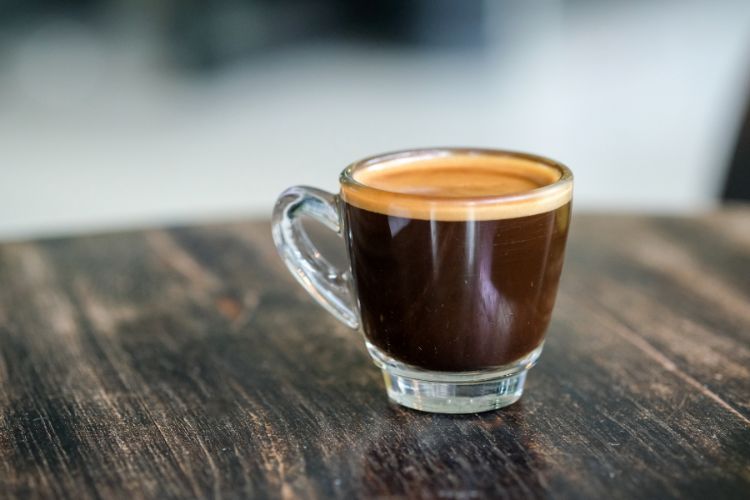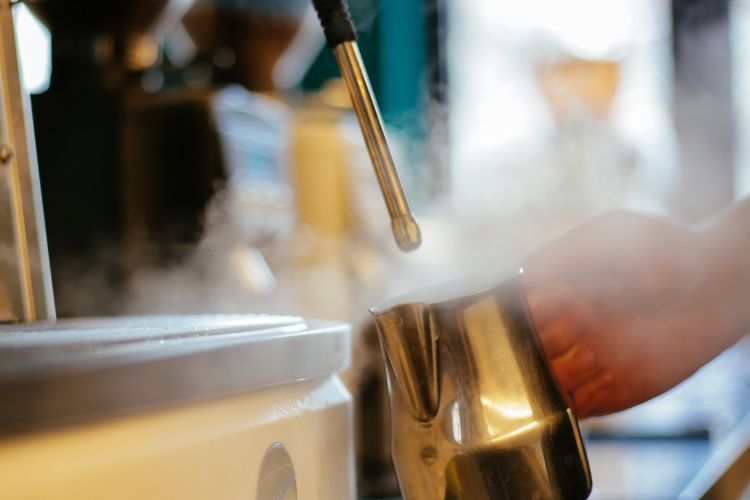Gaggia Classic Pro vs. Evo: A Comparison Guide
If you’re in the market for a reliable, high-quality espresso machine, chances are you have come across these two popular models from Gaggia: the Classic Pro and the Classic Evo Pro.
Both are known for their solid construction, classic design, and ability to deliver café-style espresso at home. And while they may look similar at first glance, there are key differences that could influence your decision.
In this comparison guide, you’ll discover the features, performance, and upgrades that distinguish the Gaggia Classic Pro and Evo to help you determine which machine best suits your coffee routine.
Gaggia Classic Pro vs. Evo: Which one should you choose? Let’s find out.

Overview of Gaggia Classic Pro
The Gaggia Classic Pro was released in 2019 as an updated version of the original Gaggia Classic, which first came out in 1991. It’s an entry-level home espresso machine, known for its durability and capability to produce quality espresso.
The Classic Pro comes equipped with a commercial-style 58 mm chrome-plated brass portafilter and a professional steam wand featuring a two-hole steam tip. This setup makes it easier to texture milk finely enough for latte art.
- Solid Steel Housing, Made in Italy
- 9 Bar Espresso Extractions
- Stainless Steel 58mm Commercial Portafilter
- Commercial Three Way Solenoid Valve
- Commercial Steam Wand
The machine includes a 2.1-liter removable water reservoir, a passive stainless steel cup warmer, and three rocker switches for power, brewing, and steaming.
It’s designed to accommodate users of all skill levels, coming with both pressurized baskets for pre-ground coffee and commercial single and double shot baskets ideal for use with a grinder.
Another feature worth noting is the three-way solenoid valve; it relieves pressure immediately after extraction, which results in drier coffee pucks and simpler cleanup.
Overview of the Gaggia Classic Evo Pro
The Gaggia Classic Evo Pro is an updated version of the popular Classic Pro espresso machine, released in 2023. It features a brushed stainless steel exterior with additional painted finish options, giving it a modern yet classic look suitable for most kitchens.
A significant upgrade comes in the form of a solid brass group head, which enhances temperature stability and longevity compared to previous models. The machine also includes a stainless steel portafilter for greater durability and resistance to wear.
- Solid Steel Housing, Made in Italy
- 9 Bar Espresso Extractions
- Stainless Steel 58mm Commercial Portafilter
- Commercial Three Way Solenoid Valve
- Commercial Steam Wand
Unlike the Gaggia Classic Pro, which has an uncoated aluminum boiler and a heating element rated around 1,350 to 1,375W, the Gaggia Classic Evo Pro features a brass boiler with a non-stick, anticorrosion coating.
Its heating element rating varies by region: approximately 1,300W in European models and between 1,400 and 1,450W in North American models.
These upgrades lead to faster warm-up times and improved temperature stability for more reliable brewing.
Gaggia Classic Pro (2019) vs. Evo Pro (2023): What’s the Difference?
The Gaggia Classic Pro and Gaggia Classic Evo Pro are similar machines at their core, but the Evo Pro (2023) introduces several key upgrades over the Classic Pro (2019).
Here’s a breakdown of the differences:
Brewing Pressure
On the Gaggia Classic Pro, the overpressure valve (OPV) is factory-set to around 12–14 bar. This might work fine if you’re using pressurized baskets or brewing darker roasts, but once you start using specialty coffee and aiming for clarity and balance, that extra pressure becomes a problem. At 12+ bar, you’re more likely to get channeling, over-extraction, and muted flavors.
To fix this, many Classic Pro owners opt to replace the factory spring with a lower-pressure version to bring the pressure down to the ideal 9 bar for specialty espresso. It’s a well-known mod, but one that requires some care (and technically voids the warranty in certain countries).
With the North American version of Gaggia Classic Evo Pro, you don’t have to worry about swapping springs since Gaggia ships the Evo with the 9-bar spring pre-installed. You unbox it, dial in your grind, and pull a shot that already tastes balanced and sweet right out of the gate.
In Europe, the Evo Pro still ships with the higher-pressure spring by default, but the internal hardware is ready for a swap. Most dealers will do the 9-bar upgrade in minutes if you ask.
Boiler Material and Capacity
The Classic Pro sticks with its longtime aluminum boiler, which holds about 3.5 ounces (100 ml) of water.
Aluminum heats up fast but is a bit soft and reactive, so it tends to build up scale and needs gentle cleaning to avoid damage. And because the boiler has a relatively small capacity, adding cold water to refill it can cause the temperature to drop by 2 to 3 °C between consecutive shots.
On the other hand, the 2023 Evo Pro switches things up with a solid brass boiler that’s about 30% bigger, holding 3.68 ounces (110 ml).
Brass is denser and holds heat better, so it keeps the temperature steadier even when fresh water comes in. Plus, it’s naturally corrosion-resistant and doesn’t have a coating, which means no worries about peeling non-stick layers like some earlier Evo models had.
The bigger, heavier boiler also helps the steam last a bit longer, letting you steam milk for longer before the machine needs to recharge.
Build Quality
One of the biggest long-term issues with the Gaggia Classic Pro is the chrome plating.
The group head, dispersion plate, and portafilter are all chrome-plated brass—which looks fine at first, but give it a year or two and you may start to see bubbling or flaking.
That plating can peel off into your puck, and once the raw brass is exposed, it begins to tarnish. It’s not just a cosmetic issue—it affects cleanliness and can even mess with flavor over time.
The Evo Pro fixes all of this. Gaggia redesigned the group head with a solid brass insert for better thermal performance, then added a polished stainless-steel cover on top for durability and looks.
More importantly, the dispersion plate and portafilter are now made from solid stainless steel. The portafilter itself is about 40 to 50 grams heavier than the one on the Classic Pro, which not only feels more premium in the hand but also helps retain heat more consistently during a shot.
Steam Performance
Both machines come with the same two-hole commercial-style steam wand. The steam thermostat is also identical, so the initial pressure out of the wand feels the same on both the Classic Pro and the Evo Pro. What changes is how long you can keep that pressure up.

Thanks to the Evo’s upgraded brass boiler, which holds more water and retains heat better, you get about 20% more usable steam time before the heating element kicks back in.
With the Classic Pro, you can consistently steam about 8 oz of milk before pressure dropped. With the Evo, however, that stretches to 10 oz—enough to produce smoother, silkier microfoam for a full latte instead of cutting it short.
If you’re only steaming milk for a single flat white, the difference is minor. But if you’re regularly making two cappuccinos in the morning (or trying to impress guests with latte art), you’ll appreciate that extra window of stable steam.
Price and Value
The Gaggia Classic Pro typically sells for around $450 to $500, while the Evo Pro (E24 brass boiler version) comes in at about $550. That’s a $50 to $100 difference. So, the real question is: Are the upgrades actually worth the extra money?
On paper, the Evo Pro does offer some solid improvements: a factory-installed 9-bar OPV spring, a larger brass boiler with better heat retention, stainless-steel internals, and a thicker mounting plate that helps reduce pump noise. But do these changes meaningfully improve your daily espresso routine?
If you’re pulling one or two shots a day and steaming milk for a single drink, the Classic Pro already performs well, and, for many users, these upgrades won’t drastically change the experience. The Evo Pro is quieter, more consistent, and more refined—but if you’re not using the machine heavily, the difference is subtle.
That said, if you were already planning to modify the Classic Pro, the equation shifts. A PID controller costs around $85, a 9-bar spring about $12, a brass dispersion plate $25, and a stainless portafilter $45. Add it all up, and you’re at $160+ in upgrades—well above the $100 price gap. And that’s not counting the time and effort (or the risk of voiding your warranty).
In summary, if you just want a reliable, capable espresso machine at the lowest price or enjoy modding, the Classic Pro still holds strong appeal. But if you want better performance without the hassle of upgrades—or you were planning to do them anyway—the Evo Pro ends up being the more cost-effective and convenient choice.
Bottom Line – Which One Should Live In Your Kitchen?
Buy the Classic Pro if your budget is tight and you enjoy the ritual of tinkering with your machine.
Choose the Evo Pro if you want to pull café-quality shots right out of the box without ever touching a screwdriver.
The price premium is modest, the warranty remains intact, and the key improvements—especially the brass boiler and factory-installed 9-bar OPV—are exactly the upgrades most owners end up doing anyway.




